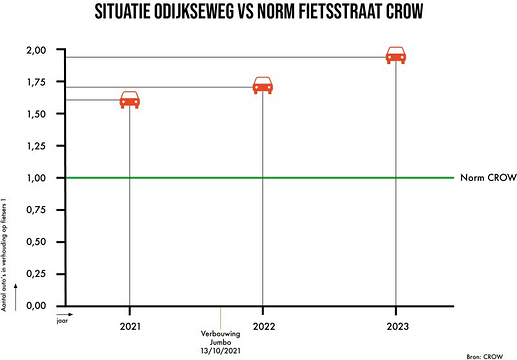This case study comes from Utrecht in The Netherlands, a city & province known around the world for its smart infrastructure and active travel focus, but also leading on citizen engagement.
Safety on the Bicycle Street
On the Odijkseweg, a bicycle street in the municipality of Houten in Utrecht, resident Cor van Angelen carries out traffic counts with a Telraam device. Since the upgrade of a supermarket at the end of his street, local traffic dynamics have changed a lot.
Click here to learn more about “bicycle streets” or fietsstraten
Mobility explained: fietsstraten
Students from the University of Applied Sciences in Utrecht (Hogeschool Utrecht - HU) delved into Cor’s data to analyse the ratio of cyclists and cars on the street and whether the concept of “bicycle street” is still being achieved, based on the car traffic counts.
Conclusion: the bicycle street on the Odijkseweg is NOT functioning optimally.
After the renovation and upgrade the situation worsened, with almost twice as many cars for every passing cyclist, according to the standards defined by CROW. A rethink of the road type would provide a more inclusive approach for all road users and will therefore promote safety and traffic flow. It is now up to the municipality and citizens in Houten to work on creating a solution for a safer Odijkseweg for all road users.
If you want to read more about the study (in Dutch only I’m afraid) click the link ![]() below:
below:
This Telraam device is one of the many devices that we have rolled out together with Samen Meten Utrecht to residents, companies and organisations active in the Province of Utrecht.
